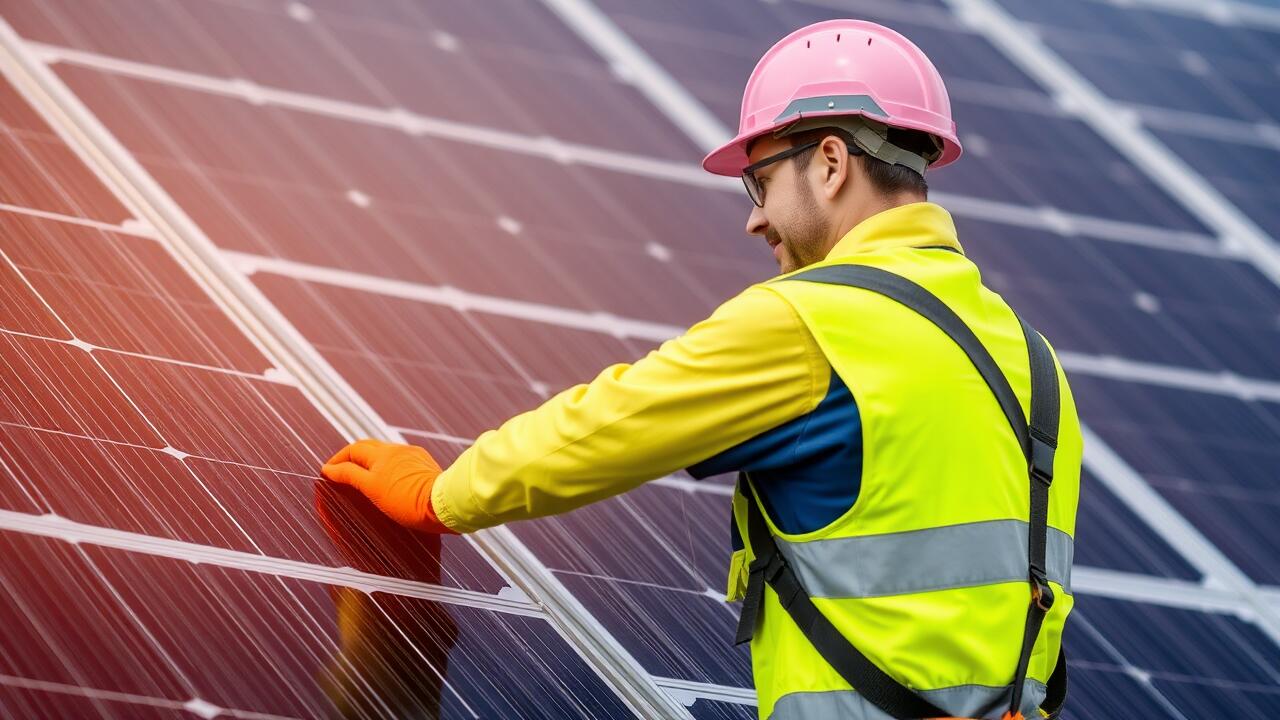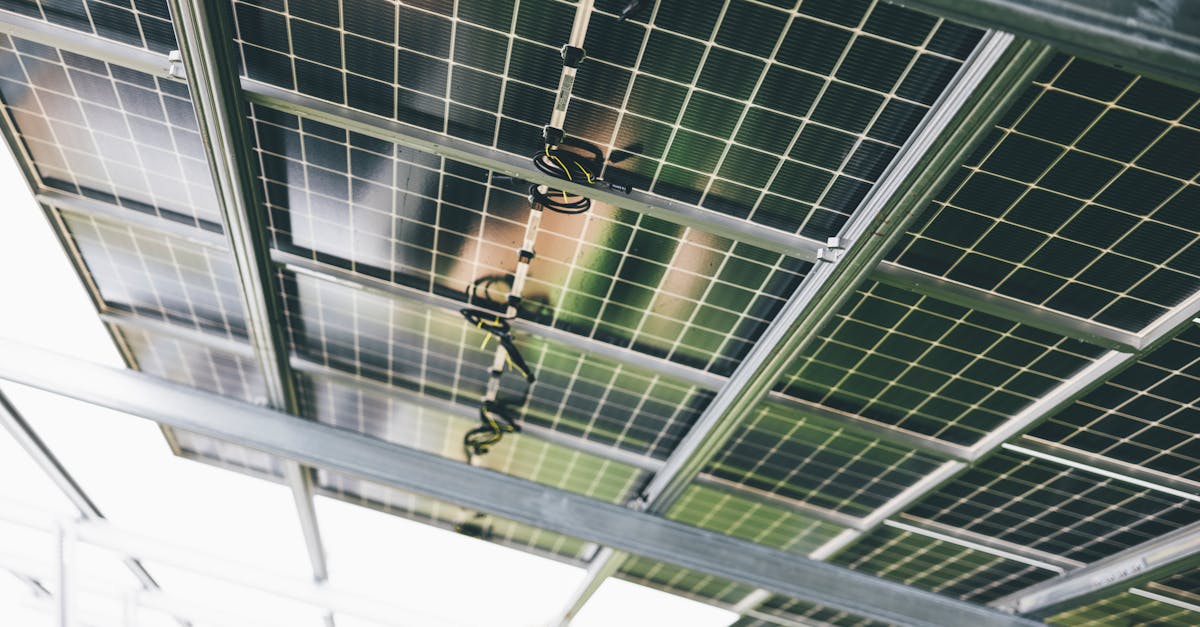
Ideal Situations for Solar Panel Optimisers
In scenarios where shading is prevalent, solar panel optimisers can play a crucial role in enhancing energy production. When trees, buildings or other obstructions cast shadows on a portion of the array, individual optimisers enable each panel to function independently. This functionality ensures that shaded panels do not detrimentally affect the overall energy output of the Solar Panel System Optimization. Homeowners facing such challenges often see significant advantages from implementing optimisers.
Moreover, irregular roof orientations can lead to inefficiencies in energy production. In cases where panels are installed on surfaces that face varying directions or angles, optimisers help to maximise energy generation from each section of the array. This is particularly beneficial for complex roof designs typically seen in older homes or bespoke constructions. By leveraging solar panel optimisers, homeowners can achieve better performance and increase the overall efficiency of their Solar Panel System Optimization.
When to Consider Using Optimisers
Solar panel optimisers are particularly beneficial in scenarios where shading or varying panel orientation is an issue. If a solar array is partially shaded by trees or nearby structures, optimisers can maximise the output from each panel individually, mitigating the loss typically associated with shaded cells. This capability proves crucial in ensuring that energy production remains robust despite challenges in environmental conditions. Additionally, in installations where panels face different directions, using optimisers can enhance the overall efficiency of the Solar Panel System Optimization, allowing for better performance across diverse orientations.
Homeowners should also consider optimisers when planning to expand their existing solar systems. If future expansion is anticipated or if different solar panels are to be added, optimisers can help manage the variability in performance among the various units. This flexibility supports a more coherent and effective Solar Panel System Optimization, promoting greater overall energy yield. Moreover, those living in locations with frequent changes in sunlight intensity due to weather patterns may find that optimisers help to sustain a more consistent energy output throughout the year.
Common Misconceptions about Solar Panel Optimisers
Many people believe that solar panel optimisers are only necessary in installations where shading consistently occurs. While shading does amplify the benefits of optimisers, they can also enhance performance in systems where panels are oriented in different directions or are of varying ages. Solar Panel System Optimization can significantly improve energy production across the board, regardless of the specific environmental conditions affecting the array.
Another common misconception is that optimisers are too costly and do not provide a significant return on investment. Although the initial expense may seem high, this technology can lead to higher overall energy yields, thus offsetting initial costs over time. By ensuring that each panel operates at its peak efficiency, Solar Panel System Optimization can contribute to lower electricity bills and a faster payback period for the entire system.
Debunking the Myths
Many myths surround solar panel optimisers, leading to confusion among potential users. A prevalent misconception is that these devices are necessary for all solar panel installations. In reality, solar panel system optimization is primarily beneficial in specific scenarios where shading or irregular panel orientation significantly impacts performance. For systems installed in ideal conditions with full sunlight, the advantages of optimisers may not justify their additional cost.
Another common myth suggests that solar panel optimisers require frequent maintenance, increasing the overall expense of solar energy systems. However, optimisers are designed to be low-maintenance and long-lasting, with warranties often extending for decades. The technology has become increasingly reliable, making solar panel system optimization a practical option rather than a burdensome extra. As users gain a clearer understanding of optimisers, they can better assess their true value based on the unique characteristics of their solar setup.
The Economic Impact of Solar Panel Optimisers
The economic impact of solar panel optimisers can be significant for homeowners looking to maximise the efficiency of their solar energy systems. By ensuring that each panel operates at its highest potential, optimisers help reduce the overall energy loss caused by shading, dirt, or orientation differences. Solar panel system optimization ultimately leads to enhanced power generation, which can result in higher energy savings and a quicker return on investment.
In addition to immediate savings, the long-term financial benefits of integrating optimisers can be noteworthy. Homeowners may experience increased property value due to the improved performance of their solar installations. Furthermore, optimisers can enhance the longevity of the entire solar panel system by protecting individual panels from issues such as overheating or underperformance, thus potentially reducing maintenance costs over time.
Long-term Financial Benefits
Investing in solar panel optimisers can lead to significant long-term financial benefits. By maximising energy production from each individual panel, these devices help reduce overall energy costs, even in less-than-ideal conditions such as shading or varying panel orientations. This means that homeowners can generate more consistent solar energy throughout the day, translating into higher savings on electricity bills over time. Additionally, this enhanced efficiency often increases the return on investment, as the overall energy output of the system becomes more reliable.
Moreover, solar panel system optimization can prolong the lifespan of the solar installation. By preventing modules from underperforming due to shading or mismatch issues, optimisers help maintain the general health of the system. This greater reliability can translate to reduced maintenance costs in comparison to standard systems, which may suffer from performance drops without such technology. Overall, the combination of increased energy generation and decreased maintenance expenses positions solar panel optimisers as a financially sound choice for those looking to make the most of their solar investments.
FAQS
What are solar panel optimisers?
Solar panel optimisers are devices that enhance the efficiency of solar energy systems by ensuring that each panel operates at its maximum capacity, regardless of the performance of other panels in the array.
In which situations are solar panel optimisers particularly beneficial?
Optimisers are particularly beneficial in scenarios where solar panels are shaded, installed at different angles, or subject to varying environmental conditions, as they help maximise energy output in these less-than-ideal situations.
Are there any common misconceptions about solar panel optimisers?
Yes, a common misconception is that optimisers are only necessary for large-scale solar installations. However, they can be advantageous for residential systems as well, especially in conditions where shading or panel misalignment occurs.
What are the long-term financial benefits of using solar panel optimisers?
The long-term financial benefits include increased energy production, which can lead to lower electricity bills and quicker return on investment, as well as potential incentives or rebates for installing optimisers.
How do solar panel optimisers impact the overall efficiency of a solar energy system?
Solar panel optimisers significantly improve the overall efficiency of a solar energy system by allowing each panel to operate independently, ensuring maximum output even if some panels are performing poorly due to shading or other factors.


